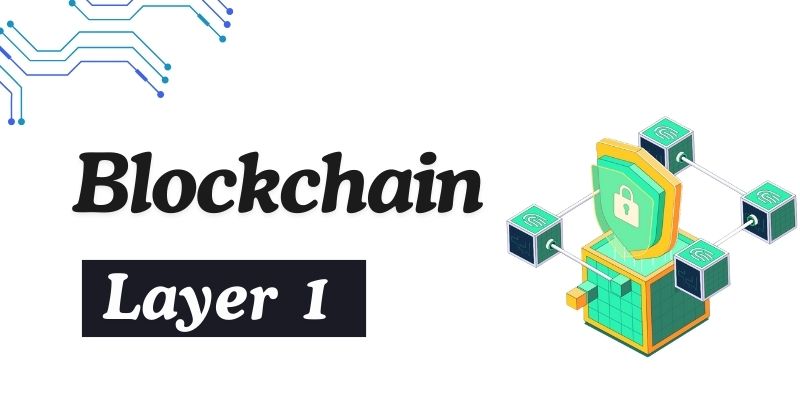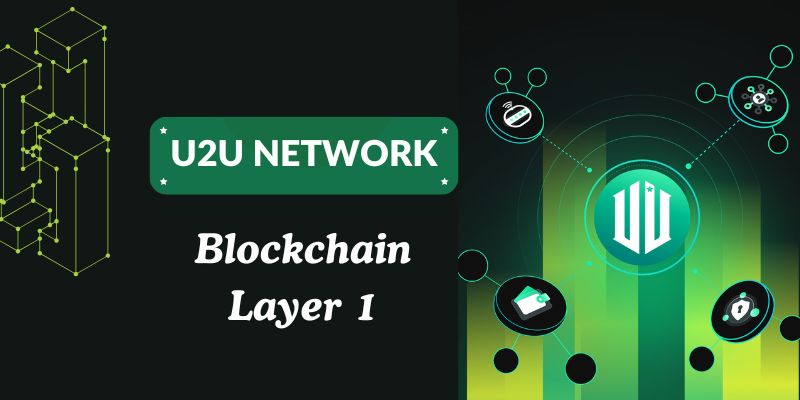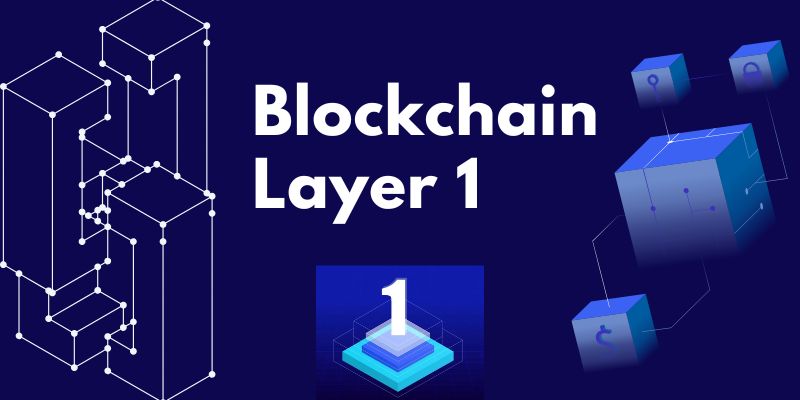Blockchain technology has transformed industries, and at the heart of this revolution lies Blockchain Layer 1. These foundational platforms are critical for the operation of decentralized applications (DApps), smart contracts, and cryptocurrencies. With the increasing adoption of blockchain technology, identifying promising Blockchain Layer 1 projects is crucial for both developers and investors. In this article, we’ll explore the top Layer 1 platforms, their strengths and weaknesses, and the trends shaping this innovative space.
Understanding Blockchain Layer 1: The Foundation of Digital Ledger Technology
Blockchain Layer 1 refers to the fundamental infrastructure of a blockchain network. It is the underlying framework that supports all essential operations, from processing transactions to enforcing the rules of consensus. Layer 1 is the bedrock upon which all other blockchain functionalities are built, including Layer 2 solutions, which are developed atop these foundational blockchains to enhance performance and scalability.
Key Characteristics of Layer 1 Blockchains
- Decentralization: One of the cornerstone features of Layer 1 blockchains is their decentralized nature. By distributing transaction validation across a wide network of nodes, these blockchains ensure that no single entity has control over the entire network. This decentralization is critical for maintaining a trustless environment where transactions are verified by consensus rather than by a central authority.
- Native Tokens: Most Layer 1 blockchains have their own native tokens, which serve multiple purposes within the network. These tokens are often used to conduct transactions, pay for transaction fees, and incentivize participants who help secure the network, such as miners in Proof of Work (PoW) systems or validators in Proof of Stake (PoS) systems.
- Consensus Mechanisms: Layer 1 blockchains employ various consensus mechanisms to agree on the state of the ledger, which is essential for maintaining the network’s integrity and security. Common mechanisms include Proof of Work (PoW), as used by Bitcoin, and Proof of Stake (PoS), which has been adopted by newer platforms like Ethereum 2.0. Each mechanism has its own way of validating transactions and adding new blocks to the blockchain, with trade-offs in terms of energy efficiency, speed, and scalability.

Examples of Layer 1 Platforms
- Ethereum: Originally launched using a Proof of Work mechanism, Ethereum is transitioning to Proof of Stake with its Ethereum 2.0 upgrade, aimed at improving scalability and energy efficiency. Ethereum is renowned for its smart contract functionality, which has paved the way for decentralized applications (DApps).
- Bitcoin: The first and most well-known blockchain, Bitcoin remains the largest Layer 1 network operating under a Proof of Work model. It is primarily used for digital payments and as a store of value.
- Solana: Known for its high throughput and fast transaction times, Solana uses a unique Proof of History (PoH) mechanism alongside Proof of Stake, making it exceptionally efficient for processing transactions.
These Layer 1 platforms provide the structural backbone for a myriad of applications, ranging from financial services and NFT marketplaces to complex decentralized applications. They not only support the direct applications built on their networks but also influence broader innovations in the blockchain sector. Understanding these foundational platforms is essential for anyone looking to engage deeply with blockchain technology, whether for investment, development, or academic purposes.
Evaluating the Potential of Blockchain Layer 1 Platforms
When assessing the potential of a Blockchain Layer 1 platform, several critical factors need to be considered. These factors not only determine the platform’s current capabilities but also its future sustainability and success in the competitive blockchain space. Here’s a detailed look at these key criteria:
Scalability
Importance: Scalability is crucial for a blockchain to support a high volume of transactions without compromising speed or increasing costs. This capability is essential for widespread adoption, especially in use cases requiring rapid processing, like payments and decentralized applications.
Examples: Solana and Avalanche are notable for their high transaction per second (TPS) capabilities. Solana, for instance, leverages its innovative Proof of History (PoH) consensus combined with Proof of Stake (PoS), enabling it to handle thousands of transactions per second. Similarly, Avalanche’s unique consensus protocol allows for rapid finality and high throughput, catering to demanding applications.
Security
Importance: Security is paramount to protect user data and assets. A secure blockchain ensures that transactions are safe from attacks and that the network remains stable and reliable under all conditions.
Evaluation: A Layer 1 blockchain should implement advanced cryptographic techniques and consensus mechanisms that guard against both external attacks and internal frauds, maintaining a secure and immutable ledger.
Decentralization
Importance: Decentralization prevents any single point of control or failure, distributing governance and operations across a broad network. This not only enhances security but also promotes fairness and transparency in the network operations.
Evaluation: The degree of decentralization can be measured by the number of nodes, the diversity of validators, and the distribution of token ownership. Higher decentralization typically correlates with increased trust and resilience against censorship or collusion.
Interoperability
Importance: As the blockchain ecosystem grows, the ability to interact seamlessly with other platforms becomes increasingly important. Interoperability enables cross-chain transactions and broader collaboration across different networks.
Examples: Platforms like U2U focus on interoperability, integrating features that facilitate communication and transactions between diverse blockchain systems. This capability is crucial for creating a more connected and efficient blockchain ecosystem.
Developer and Community Support
Importance: A vibrant and active developer community is essential for the continuous improvement and innovation of a blockchain platform. Community engagement also drives adoption and fosters a supportive ecosystem around the platform.
Evaluation: Successful Layer 1 blockchains often have robust development tools, active forums, extensive documentation, and strong community governance models. These elements attract developers and encourage community participation, which in turn contributes to the platform’s growth and evolution.
By thoroughly assessing these criteria, stakeholders can identify which Blockchain Layer 1 platforms are best positioned for long-term success and strategic importance in the rapidly evolving blockchain market. Platforms that excel across these dimensions are likely to lead in innovation, user adoption, and overall impact within the blockchain ecosystem.
Top Blockchain Layer 1 Projects for 2025
Ethereum 2.0: As the upgraded version of Ethereum, Ethereum 2.0 transitions to Proof of Stake, enabling better scalability and energy efficiency. With its established ecosystem of DApps and smart contracts, Ethereum continues to lead the blockchain space.
Solana: Known for its lightning-fast transaction speeds and low fees, Solana utilizes a unique Proof of History (PoH) mechanism. This platform is highly popular for NFT marketplaces and gaming applications.
Avalanche: Avalanche offers a flexible and modular approach with its subnet architecture, enabling developers to create custom blockchain environments for specific use cases.
Aptos: Designed by former Meta engineers, Aptos uses the Move programming language for secure and efficient smart contract execution. The platform focuses on high scalability and developer-friendly environments.
Sui: Built for speed and low latency, Sui is tailored to support DeFi and NFT projects. Its parallel transaction processing system sets it apart from many competitors.
U2U: A rising star, U2U emphasizes user-to-user interactions and interoperability. With its innovative architecture and focus on a seamless user experience, U2U is quickly gaining traction in the blockchain ecosystem.

Strengths and Weaknesses of Blockchain Layer 1 Projects
Blockchain Layer 1 platforms are foundational technologies with unique strengths and challenges that shape their adoption and evolution. Here’s a detailed breakdown of the key players:
Ethereum 2.0
Strengths:
- Established Ecosystem: Ethereum boasts the largest and most mature ecosystem for decentralized applications (DApps), smart contracts, and DeFi projects.
- Strong Community: A robust and engaged developer and user community continues to drive innovation and support the platform.
- Security and Decentralization: Ethereum’s decentralized structure makes it one of the most trusted networks in blockchain.
Weaknesses:
- Gradual Transition: The upgrade to Ethereum 2.0, while promising, has been slow and complex, creating uncertainty and challenges for developers and users.
- Competitive Landscape: Faces increasing competition from newer, more scalable platforms like Solana and Avalanche.
Solana
Strengths:
- Speed and Efficiency: Solana is renowned for its high throughput, capable of handling thousands of transactions per second (TPS).
- Low Transaction Costs: Minimal fees make it ideal for microtransactions, gaming, and NFT marketplaces.
Weaknesses:
- Network Stability: Repeated network outages have raised concerns about its reliability and robustness under heavy loads.
- Centralization Concerns: The architecture of Solana has led to criticism regarding its relatively lower decentralization compared to Ethereum.
Avalanche
Strengths:
- Flexible Subnet Architecture: Avalanche allows developers to create custom blockchains tailored to specific use cases, enhancing its versatility.
- Rapid Finality: Transactions are confirmed within seconds, improving the user experience for real-time applications.
Weaknesses:
- Adoption Challenges: While it has gained traction in DeFi, its overall ecosystem adoption lags behind competitors like Ethereum.
- Smaller Developer Base: The developer community is growing but remains smaller compared to Ethereum’s vast network.
Aptos
Strengths:
- Innovative Technology: Aptos leverages the Move programming language for enhanced security and scalability.
- Focus on Scalability: Built to handle high transaction volumes, making it suitable for large-scale applications.
Weaknesses:
- Nascent Ecosystem: As a newer entrant, Aptos is still building its developer community and ecosystem.
- Unproven at Scale: The platform needs to demonstrate sustained performance under heavy adoption and real-world usage.
Sui
Strengths:
- Parallel Transaction Processing: This innovation enables high scalability and efficiency, making Sui attractive for DeFi and NFTs.
- User-Friendly Features: Designed to support intuitive and seamless user experiences.
Weaknesses:
- Early-Stage Development: The platform is still in the process of developing its ecosystem and attracting significant adoption.
- Competitive Pressure: Faces stiff competition from other scalable Layer 1 platforms like Solana and Avalanche.
U2U
Strengths:
- Interoperability Focus: U2U is designed for seamless integration with other blockchain ecosystems, enhancing its utility in a multi-chain environment.
- User-Centric Design: Prioritizes accessibility, low fees, and ease of use, appealing to both developers and non-technical users.
- Community Growth: Early initiatives to foster a strong developer and user community show promise for long-term ecosystem development.
Weaknesses:
- New in the Market: As a relatively new platform, U2U lacks the extensive track record of more established competitors.
- Adoption Curve: It faces the challenge of proving its scalability and reliability in real-world scenarios as it gains traction.
Trends Shaping Blockchain Layer 1 Development
The development of Blockchain Layer 1 technologies is being driven by several key trends that highlight the evolving needs and future directions of the blockchain industry. These trends not only reflect the technological advancements but also the shifting market dynamics and user demands. Here’s a deeper look at the forces shaping the future of Layer 1 blockchains:

Energy-Efficient Consensus Mechanisms
Overview: In response to growing environmental concerns and the need for more sustainable practices, there is a significant shift from traditional energy-intensive consensus mechanisms like Proof of Work (PoW) to more energy-efficient ones such as Proof of Stake (PoS).
Impact: This transition is crucial for the long-term sustainability of blockchains, reducing their environmental footprint and enhancing their appeal to a broader audience, including environmentally conscious investors and users. Projects like Ethereum’s upgrade to Ethereum 2.0, which integrates PoS, underscore this trend.
Cross-Chain Solutions
Overview: As the blockchain ecosystem becomes more fragmented, interoperability becomes a critical feature. Platforms that facilitate seamless interactions between different blockchains are becoming increasingly vital.
Impact: U2U’s emphasis on interoperable design allows it to function as a bridge across various blockchain networks, enhancing usability and functionality. This capability is essential for building a more cohesive and efficient blockchain ecosystem, where assets and data can flow freely across different platforms.
DeFi and NFT Expansion
Overview: Decentralized Finance (DeFi) and Non-Fungible Tokens (NFTs) are sectors experiencing rapid growth and innovation, heavily relying on robust Layer 1 platforms to scale and secure their operations.
Impact: Platforms like Solana and Sui, known for their high throughput and low transaction costs, are particularly well-suited for these applications. Their ability to support the high transaction volumes associated with DeFi and NFT markets positions them for substantial growth as these sectors expand.
Institutional Adoption
Overview: There is increasing interest from institutional players in using blockchain for more than just financial transactions. Enterprises are looking at blockchains like Avalanche for creating customized solutions that cater to specific business needs.
Impact: The ability of Layer 1 blockchains to meet the demands of enterprise-level applications is crucial for broader market adoption. Avalanche’s flexible subnet architecture, which allows for tailored blockchain solutions, is an example of how Layer 1 platforms are evolving to meet these needs.
Blockchain Layer 1 platforms form the backbone of the decentralized technology landscape. From Ethereum’s pioneering smart contract platform to U2U’s innovative interoperable solutions, these projects are at the forefront of addressing current challenges and capitalizing on new opportunities. For investors and developers, understanding the capabilities, trends, and potential of these platforms is essential for navigating and succeeding in the rapidly evolving blockchain space.
Thank you for your interest in our article. Please follow the latest news here.

